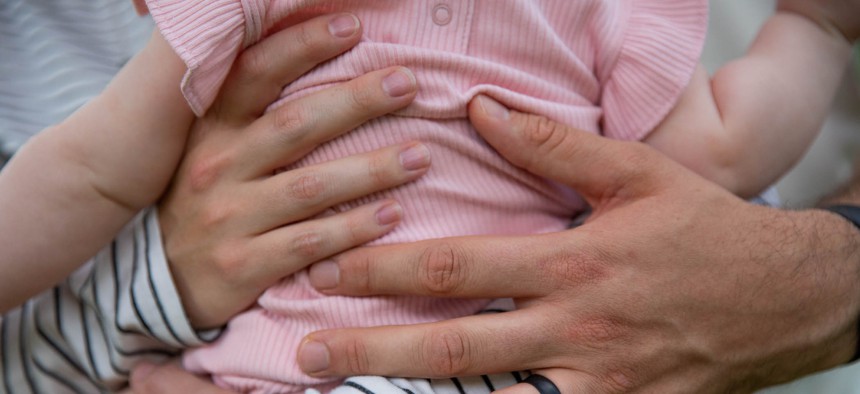Births Decline in Most States, Continuing a Long-Term Trend

The Washington Post via Getty Images
‘We’re back where we started before Covid hit.’
This story was first published by Stateline. Read the original article here.
Fast-growing Texas and Florida had the biggest increases in the number of births last year, while a dozen other states—half of them in the South—continued to rebound from pandemic lows.
In the United States as a whole, however, the number of births has plateaued after a modest increase following the worst of the pandemic, according to preliminary data from the federal Centers for Disease Control and Prevention.
Births increased in only 15 states from 2021 to 2022, compared with growth in 43 states between 2020 and 2021. More detailed statistics, which could shift slightly, are due for release June 1.
Overall, the new data shows the continuation of a long-term trend toward fewer births in the United States, said Phillip Levine, an economics professor at Wellesley College who studies birth trends. Births were down more than 650,000 or 15% over the past 15 years.
“We’re back where we started before Covid hit,” Levine said. “Births are still declining, albeit perhaps at a slower pace. There certainly is no reason to stop sounding the sirens on the long-term decline in births in the United States.”
Without an increase in immigration, that trend could mean an older population, a smaller workforce and diminished economic productivity. That’s true even in Texas, where second-generation immigrants and women under 30 in general are increasingly postponing parenthood.
Illinois, Pennsylvania and Michigan, states where the overall population is declining, experienced the largest decreases in births.
In Texas and Florida, the number of births was up 4% in 2022 compared with 2021. In terms of overall population, they are the fastest-growing states as of mid-2022, according to the latest U.S. Census Bureau estimates.
In Texas, births increased by almost 16,000, compared with an increase of 5,400 between 2020 and 2021. In Florida the increase was about 8,200 compared with 6,600 the previous year. Other states with increases between 2021 and 2022 were Georgia (about 1,900), North Carolina (1,200), New Jersey (795), Arizona (526), Virginia (361), Tennessee (359), Delaware (353), South Carolina (302), Maryland (272) and Kentucky (262). Kansas, Idaho and Alaska had increases of fewer than 100 each.
Nationally, there were 700 more births in 2022 than there were in 2021. Between 2020 and 2021, the number of births increased by 51,000.
Florida’s increase in births is partly a reflection of more people moving to the state, but also higher birth rates after a dip during the depths of the pandemic, said Stefan Rayer, population program director at the University of Florida’s Bureau of Economic and Business Research. Even in Florida, however, the long-term trend is bending downward, with birth rates for Black, white and Hispanic women well below the peaks in the mid-2000s.
Arizona’s increase of about 500 births, about half the number of the previous year’s increase, may already be turning into a small decrease in early 2023, State Demographer Jim Chang said.
Illinois had the biggest drop in births, about 4,400, almost four times the previous year’s drop of 1,100. Pennsylvania and Michigan (both about -2,800) and New York (-2,300) saw births decline in 2022 after increases between 2020 and 2021.
It was a different story between 2020 and 2021, when New England states saw the largest increases. New Hampshire, Connecticut and Vermont had the largest percentage increases, according to final 2021 birth data released earlier this year.
Only North Dakota has bucked the overall trend of fewer annual births since 2007. Despite a drop in 2022, the state still had about 800 more births in 2022 than it did in 2007. As North Dakota’s fracking industry in the Bakken Formation has grown in that time, it has attracted more young people of childbearing age, said Kevin Iverson, a demographer in the state Department of Commerce.
In Texas, some lawmakers are worried about too many babies being born without the health and social services infrastructure to support them. Prenatal care is already difficult to find, especially for poor women in rural areas of Texas, and the state recently enacted a strict abortion ban.
Texas state Rep. Claudia Ordaz Perez, a Democrat representing part of El Paso, has called Texas “one of the most dangerous states in the nation to have a baby,” citing high maternal mortality and low rates of health insurance.
Like other Western states, Texas has seen a recent decline in birth rates because of a downturn in immigration from Mexico and fewer births to young women in general, according to a 2021 report by the Federal Reserve Bank of Dallas.
Some attribute declining birth rates to more women recognizing that they can find success and fulfillment working outside the home—whether or not they decide to become mothers.
“There might be unique explanations for each little squiggle in fertility trends, but the world is going to have to adjust to reality of permanent below-replacement fertility,” said Charles Hirschman, a professor emeritus at the University of Washington who studies fertility trends He cited recent work by Frances Goldscheider, a sociologist at the University of Pennsylvania.
“We have successfully had the first gender revolution with women almost reaching parity in traditional male roles, but there has been little progress in bringing men into participating equality in household and child-rearing roles,” Hirschman said.

NEXT STORY: Combining GCN and Route Fifty: A Note to Our Readers





